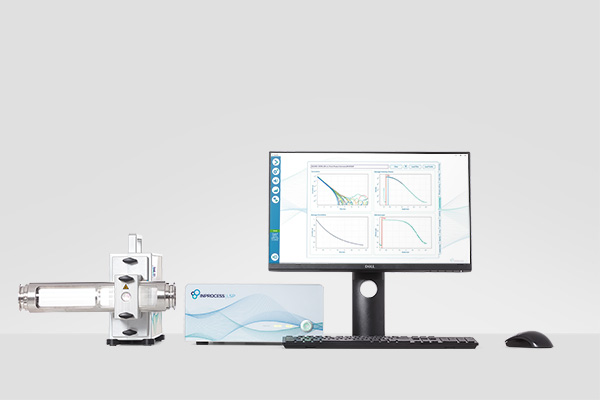

PhaSR-DLS
A new measurement mode in Spatially Resolved DLS, enhancing inline and offline nanoparticle sizing
PhaSR-DLS
Key features
- Extended application range: At least 20x reduction in the lowest accessible concentrations
- Significantly reduced noise: Enhanced Particle Size Distribution (PSD) accuracy and precision
- Higher sensitivity: Ability to characterize weak scattering samples such as proteins
- No number fluctuations: Aggregates and large particles become more accessible
- Available as an add-on measurement mode to existing NFS instruments (no hardware modifications)
- Supplied with improved User Interface of NFS XsperGo software

PhaSR-DLS: Beyond Intensity Fluctuations
The rich interferometric data obtained by the NanoFlowSizer allows to extract information beyond just the depth-resolved scattered intensity.
The new PhaSR-DLS mode exploits this by capturing the phase of the scattered light waves at different depths. This gives unique direct access to the ‘Field Correlation function’, which significantly extends the operational range of NanoFlowSizer instruments in terms of sensitivity and resolution.

NFS detection scheme using ‘Fourier Domain Low Coherence Interferometry’, whereby scattering information at different depths is ‘instantaneously’ acquired at each time point SR-DLS employs the scattered intensity shown on the right, the new ‘PhaSR-DLS’ add-on exploits the full ‘phase sensitive’ scattering data from analysis of the spectrum of backscattered broadband light.

Accessible size-concentration range for polystyrene particles using the NFS-Thalia–2 system. PhaSR provides a factor of at least 20x reduction in the lowest accessible concentrations. Data points indicate successful measurements (PhaSR+SR-DLS: blue, PhaSR only: black).
PhaSR-DLS Application Benefits
The enhanced performance of NFS systems with PhaSR-DLS allows for even more detailed inline and off-line nanoparticle size characterization in several applications. The sensitivity gain provides detailed (inline) characterization of the behavior of protein solutions (left), and for low concentration liposome/LNP formulations, emulsions and e.g. nanoparticle syntheses process. PhaSR benefits carry over to the inline analysis of flowing suspensions.

Using the NFS Thalia-2 with PhaSR-DLS mode to monitor details of BSA-protein solutions during thermal unfolding and aggregation at 65oC. Intensity-based PSDs at different stages of the experiment show the development of aggregates.
Taking your process forward


